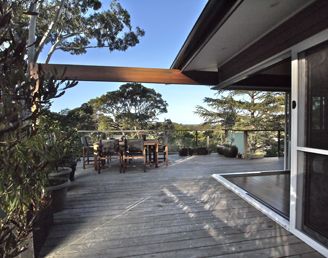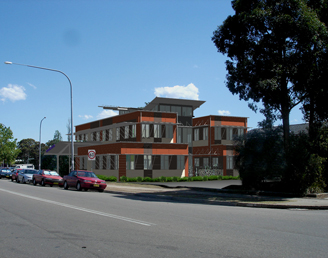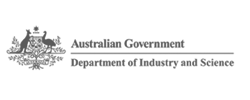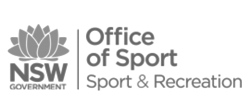Is teal the most beautiful colour?
Posted by admin on 17/05/2022 at 2:50 pm“How good is democracy!?” someone may have said recently. It is both a basic human right and a rare privilege. And here we are at the pointy end of a Federal election which is both more interesting and more critical than any in the last 70 years.
The ‘teal’ independents are making it interesting, while the climate crisis, the aged care crisis, childcare affordability, and regional security issues are making it critical. Covid is almost passé by comparison!
Far be it from us at Envirotecture to tell anyone how to vote, but what is interesting is the overwhelming opinion of a range of scientists, economists, and increasingly business people, that we are on a collision course with catastrophe if we follow either of the major parties’ climate policies. Take your pick of 4° or 3° of warming from Liberal or Labor (respectively) if their policies were applied across the board and across the planet. Either of those is catastrophic.
According to research published last week, the Greens’ have the only party policy with any chance of limiting warming to less than 2°, but that party is (extremely) unlikely to form government*.
 The LNP’s somewhat shaky commitment to net zero by 2050 is 28 years away. We do not have 28 years to get global heating under control.
The LNP’s somewhat shaky commitment to net zero by 2050 is 28 years away. We do not have 28 years to get global heating under control.
Source: https://theconversation.com/scorched-dystopia-or-liveable-planet-heres-where-the-climate-policies-of-our-political-hopefuls-will-take-us-182513
But what if there were politicians who were economically more ‘blue’ than ‘red’, but environmentally ‘green’? That would make their colour, well, teal! And so the term ‘teal independents’ is born. And what if their influence was sufficient to steer the Parliament to legislate for the better targets?
There are a number of high profile teal candidates making headlines, and the ice-breaker who started the trend is Zali Steggal, wresting Warringah from an incumbent Prime Minister – a rare feat in any election. This time she is joined by several candidates with increasingly high profiles and well funded campaigns, like Allegra Spender in Wentworth, and Dr Sophie Scamps in Mackellar.
They all have several things in common: concern for much stronger climate change action; a push for a Federal ICAC with teeth and transparency; and fairer opportunities for wealth in the community. Some, like Scamps, have health care as a high priority too, focussing on the lack of reliable aged care – an unsurprising degree of compassion given that she is a GP.
Liberal Party operatives have been quick to criticise their backers, even accusing them of being a clandestine political party, due mainly to the donations from Simon Holmes a Court’s ‘Climate 200’ fund. In reality, his organisation offers funds to candidates whose platform aligns with their agenda, so are no different to any other political donor. But the Libs are not alone in their distrust of the teals – the Labor Party is just as worried by the trend, but thankful that this time they are not largely in their sites. This time – but in future?
 Photo: https://theconversation.com/that-lump-of-coal-73046
Photo: https://theconversation.com/that-lump-of-coal-73046
NSW treasurer Matt Kean says that supporting the teals threatens to push the Libs further towards a Trumpian dystopia, by removing so many moderates in the party. Interesting that he openly admits there are many ultra-right nutters in the party at all, but also a bit late – the moderates have had a decade to exert their influence in the party and have failed to do so. Can Australia wait any longer?
One of the key points that climate sceptics like Matt Canavan and Barnaby Joyce (oh – and Alan Jones – remember him? no, some things are best forgotten) have repeated ad nauseam is that any action Australia may take on climate change is a drop in the global bucket and will make no difference, only hurting our own economy. They forget that the cost of recovery is nine times higher than the cost of avoidance; and that prior to the Abbott wrecking ball ripping through our bipartisan climate policies, Australia was an influencer on the world stage, and once again boxed above our weight in negotiations at the various COP meetings. Can we regain the leadership position? Not without getting our own house in order first.
Some of these independents, like Dr Sophie, offer a how to vote card with them as No. 1, but all other boxes blank, so each person can decide their own preferences. That many ‘rusted on’ voters to the main parties struggle with the concept of actually thinking through their own priorities speaks volumes about how disengaged many people are from the political process, yet are quick to criticise politicians later on.
It’s up to each of us to decide where our priorities for the future lie, because that’s what elections truly are – a vote for the future. What sort of future will we vote for? Perhaps teal really is the most beautiful colour.
*The Greens are a widely misunderstood party, often maligned without good reason, though they are far from perfect. Sometimes called the ‘watermelon party’: green on the outside but red (communist) on the inside. Anyone who is the least bit familiar with communism or radical socialism would know that the Australian Greens are far from that. Few people remember its roots in The Tasmanian Wilderness Society, and only know Bob Brown as its founder. In fact he was only one of nine, several of whom were fairly conservative Christians. Bob has made some awful goof-ups in recent years, like his convoy into coal country Queensland before the last election, and his scuttling of Rudd’s Carbon Pollution Reduction Scheme (CPRS) years before that (forgetting it is folly to oppose the possible in pursuit of the perfect), which opened the door to the Abbott wrecking ball and a wasted decade of opportunity. But a reading of their actual policies (as Adam Bandt famously said last week, “Google it mate!”) shows them to be a much more moderate force than the likes of Pauline Hanson or Clive Palmer would have you believe.
Sustainable House Design
We will help you create a family home that works well, feels good, is kind to the environment, culturally appropriate and reduces your energy and running costs.
Read MoreSustainable Commercial Buildings
We design your building to help reduce your operating costs, optimize the life cycle of your building, increase your property value and increase employee productivity.
Read MoreWorking with Envirotecture
We design beautiful, sustainable buildings that work for you, your family or your business. Full range of building design, consulting and training services.
Read More






















